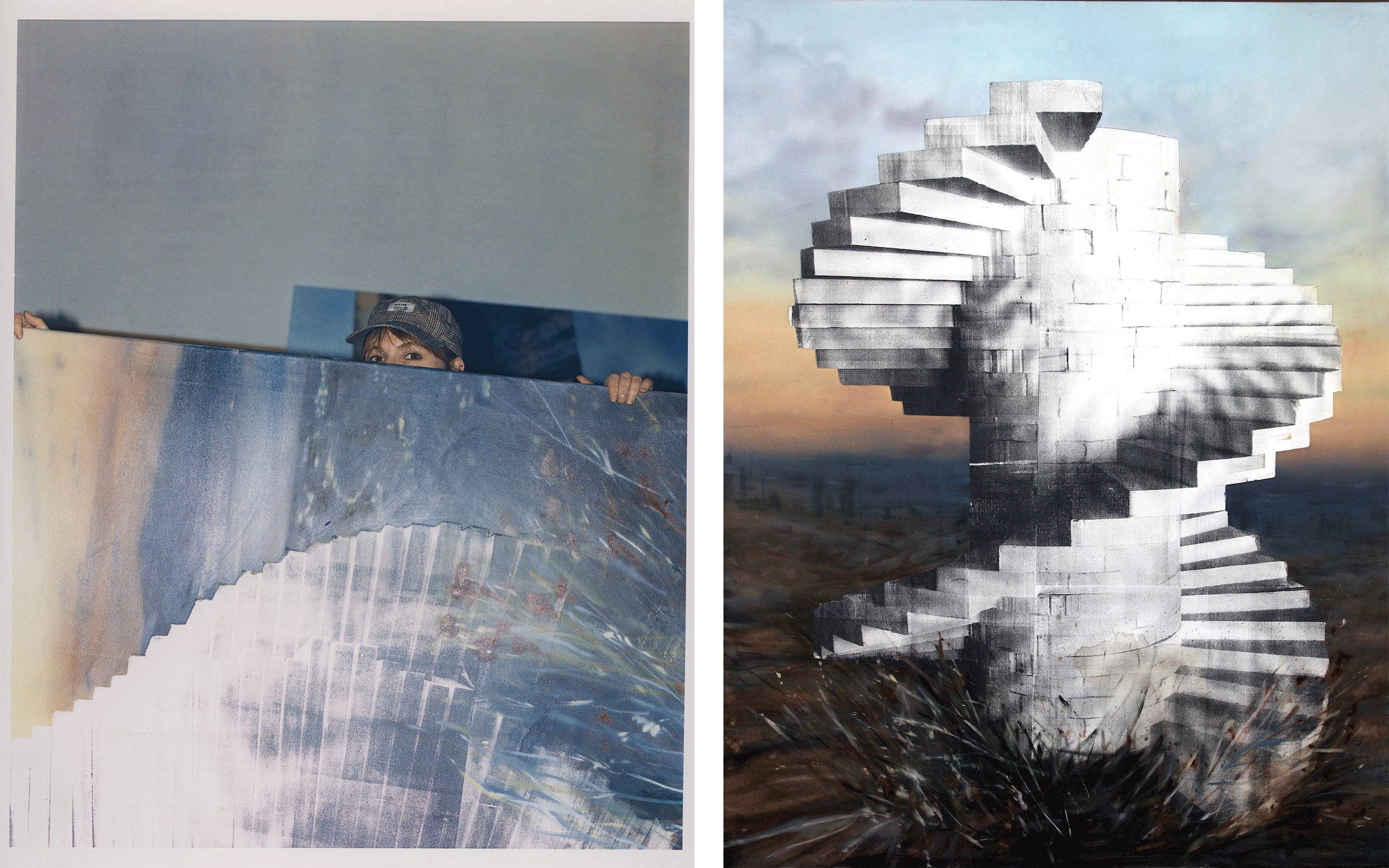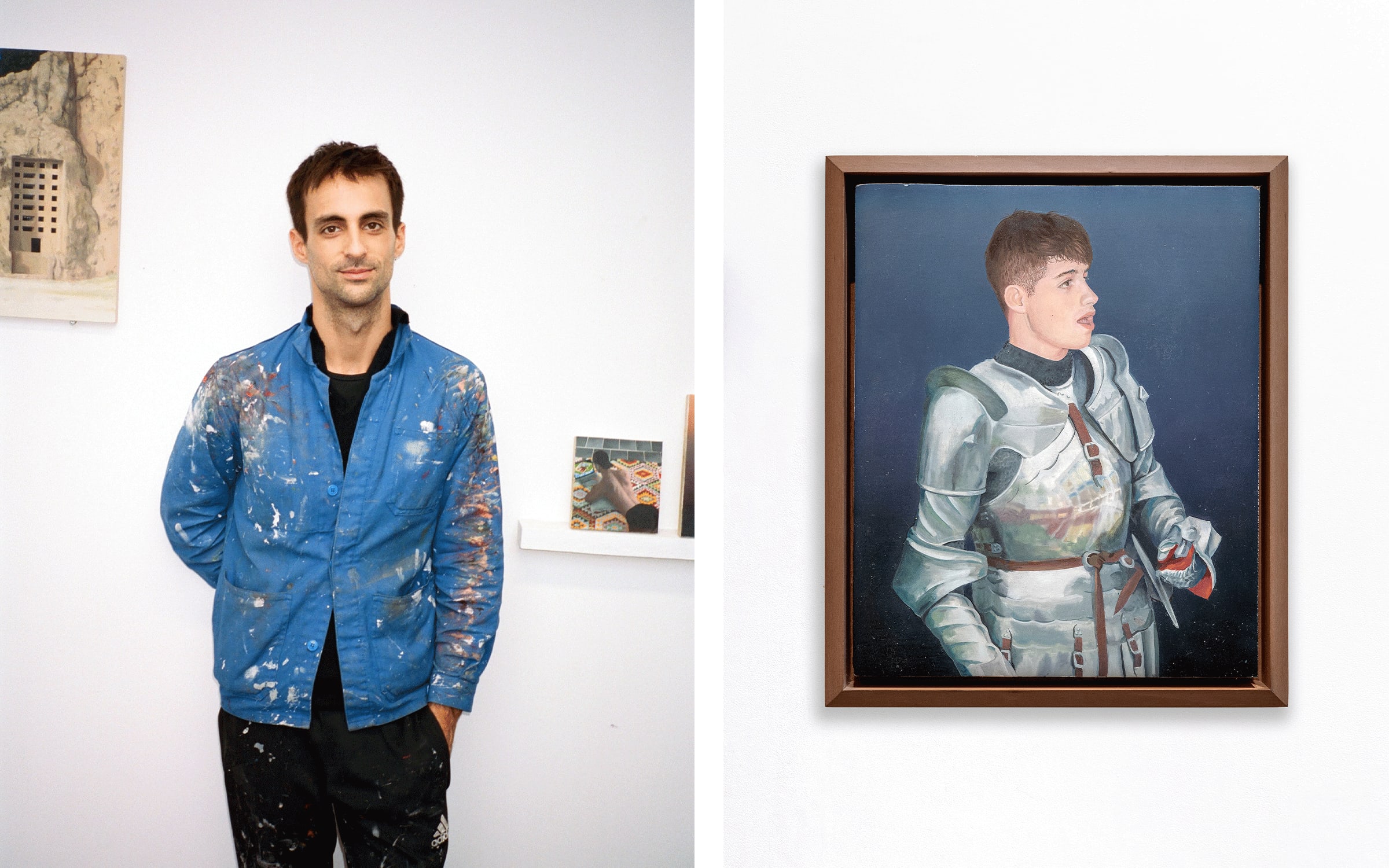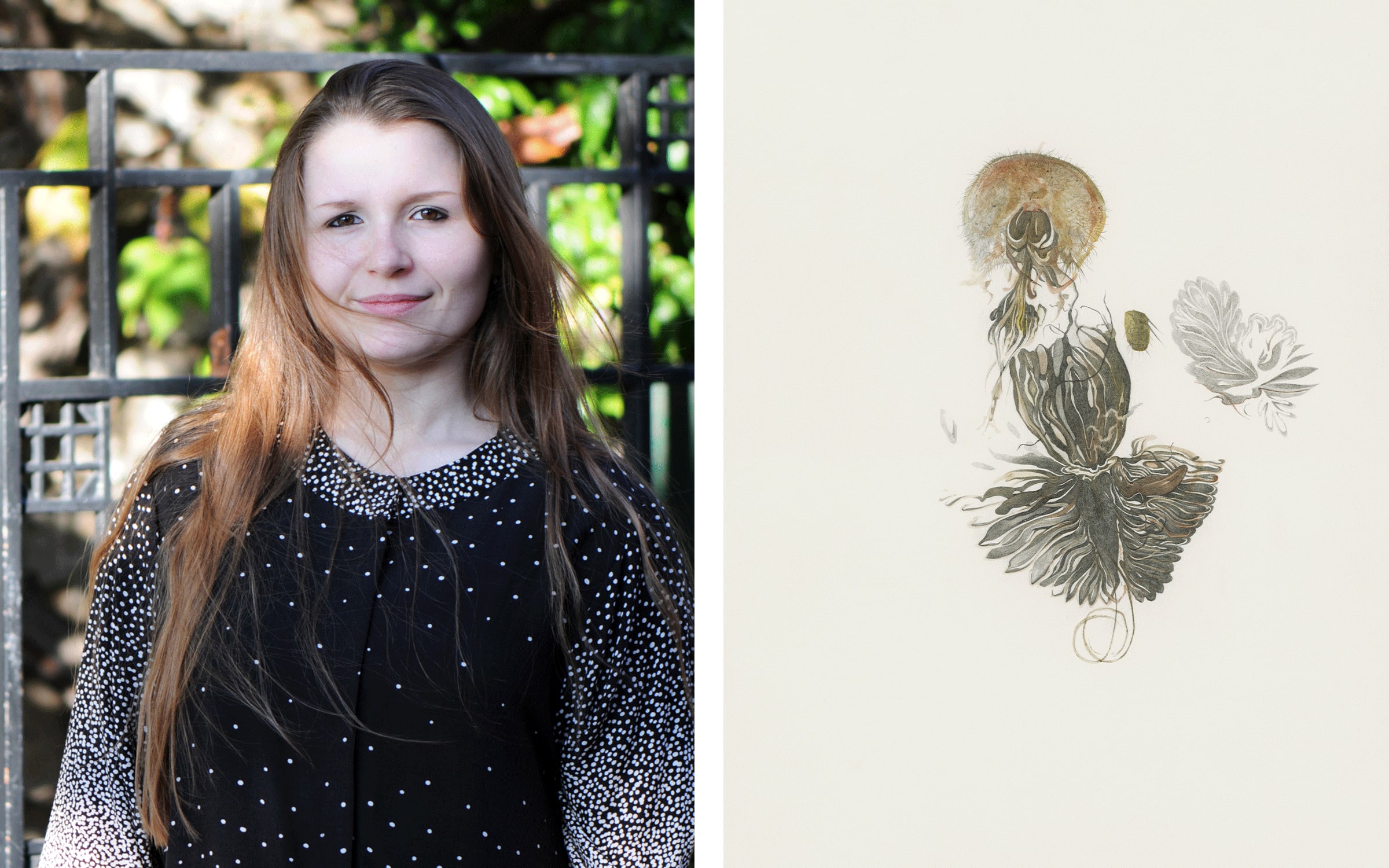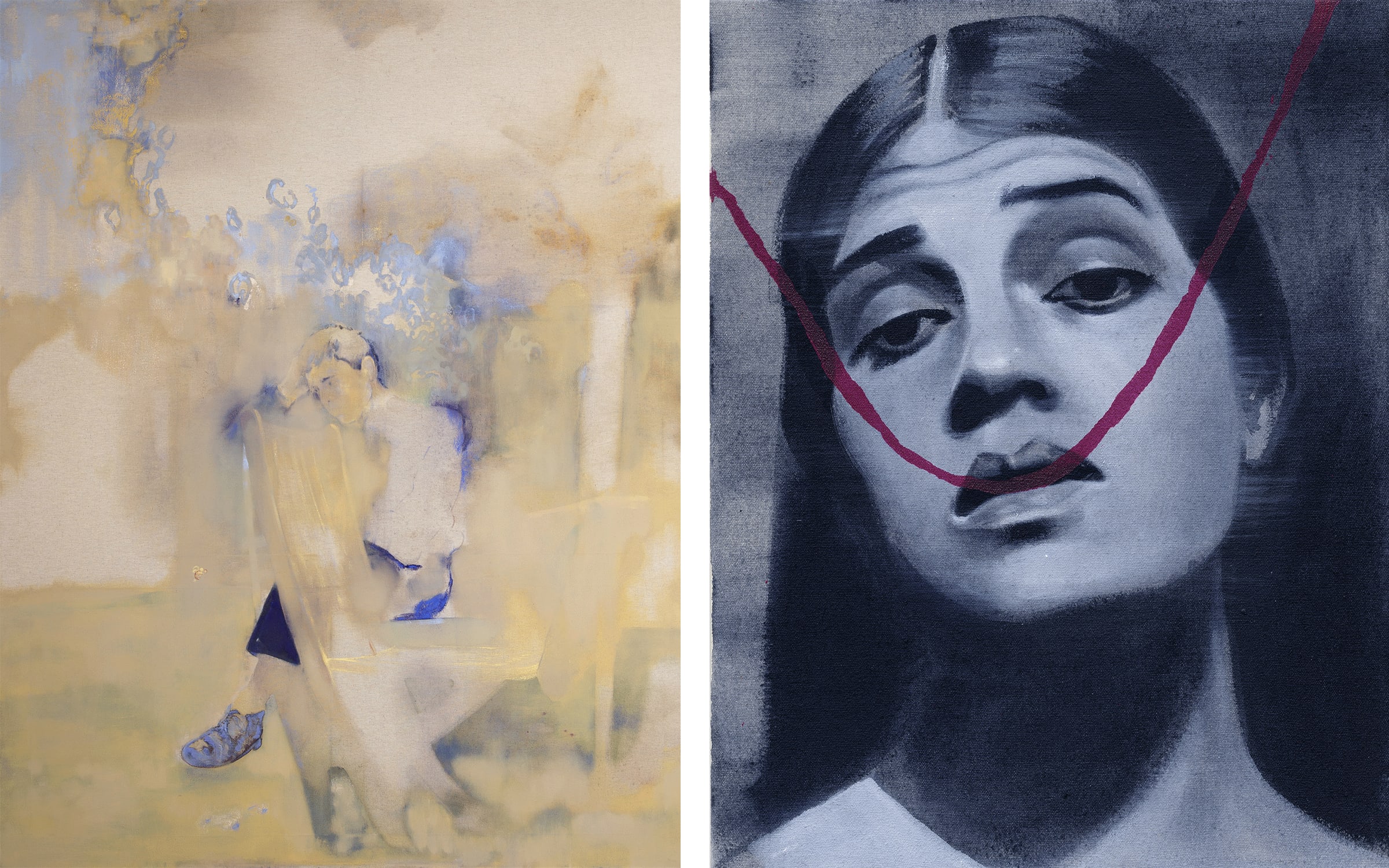Is French painting immortal? It wasn’t always thought to be so. ‘Being a painter in France just 15 years ago wasn’t exactly a street paved with gold – it actually sucked,’ says the artist Eva Nielsen, who participated in last year’s Lyon Biennale of Contemporary Art. ‘When I went to England to study at the end of the 2000s, I apologized for being a painter! But there, they didn’t understand why.’ Now, Nielsen is a sought-after exponent of the medium, which is currently being celebrated in the exhibition ‘Immortal: Vitality of Young French Figurative Painting’ at MO.CO. in Montpellier.

Vibrant and varied, recent French painting has caught people’s attention with its figurative, or predominantly figurative, style. More than a trend, it appears to stem from a deeper urge: to describe the world today and speak of ourselves in paint. From a feeling of emptiness comes a vital need to create images, in spite of everything – a need to find order in the visual barrage that engulfs us, or to impose our very own muddle: painting in an era of screens.
It’s impossible, in reality, to extricate yourself from the grip of technology. So, young painters work with it instead, thereby attempting to weaken its power. A graduate from Les Beaux-Arts in Marseille, Amélie Bertrand evokes a floating world, painting with bold colors and flatness, eschewing the depth offered by Photoshop or InDesign. ‘I never try to create real spaces, only painted spaces,’ explains the 37-year-old.
From tropical scenes crisscrossed with grids, to digital water lilies and bottomless swimming pools, her highly acidic universe seems drawn from video games and spa decor: a California dream that doesn’t try to hide its tackiness and is purely decorative. ‘Where are we exactly?’ asks Thomas Clerc, writing about Bertrand’s work. ‘In a store showroom? A virtual catalogue of interior design? A prototype of a hotel foyer? A Mexican website? […] That these paintings are inspired by computer images is just one of the tricks behind the work, as they switch from one screen to another – from the web to the canvas.’

Jean Claracq works within the same paradigm. Recently graduated from École des Beaux-Arts in Paris, less than 30 years old, he has become one of the most popular young French artists among collectors, with his work already exhibited at the Fondation Louis Vuitton and the Musée Delacroix in Paris. Although working in a digital age, he evokes the Old Masters, painting on wood like the artists of the Flemish Renaissance. He borrows the clean and distant horizons of Antwerp-born Joachim Patinir (c.1480–1524), is inspired by the ambiguous photographic compositions of Jeff Wall, and uses the same perspective as 14th-century Italian painters in his images of social housing. But he is clearly painting a parable of the life of millennials, with the microscopic detail of a miniaturist. His lethargic heroes may be wearing 18th-century dress, complete with historical armor, but they seem to be kept hanging, their eyes locked on their screens. Claracq, who is increasingly turning from canvas to installation, explains: ‘I think that the characters that I paint don’t really want to be here.’
Artists no longer want to be limited by a picture frame. ‘It’s true that there is something brewing in painting nowadays, but I feel as much a painter as something hybrid,’ says Eva Nielsen. ‘Painting is constantly renewing itself, with lots of new tools. How can you go beyond the four corners of a picture frame? The question is more present than ever; it’s a real adventure.’
Mélanie Delattre-Vogt, meanwhile, has been experimenting with music, imbuing her work with that of John Cage and Erik Satie. Expanding her practice as an illustrator, she has been adding sound to her shows, or found objects: ‘sources that I like to collect, which come to me unexpectedly,’ she explains. In some of her recent work, she explores an object found by chance: ‘a fantastic book about how cheese is made, with gloved characters that handle different substances, test tubes.’ Previously, it was a book on the king of Thailand’s pet dog, written by the sovereign himself, or an encyclopedia about freezing. ‘This was the first book to trigger this obsession, introducing me to ideas that I would never have chosen myself. These volumes are talismans imbued with unexpected poetry.’ Delattre-Vogt works with pencil and ink, but adding blood brings a particular tonality to her work. She uses it dry, in watercolor: ‘This blood wash becomes part of the graphite – it becomes transparent. No gouache, no other mineral is like it.’ Thus, life becomes part of her work, spilling out beyond the frame: ‘I draw like a snail; there’s something organic, as if the shapes give birth to themselves; then I let them rest for a bit, to allow them every possibility to fully realize themselves; I let them grow.’

Nielsen is searching for the same alchemy and has chosen to mix painting and screen printing. An admirer of Sigmar Polke and Robert Rauschenberg, she explains: ‘I like the unpredictable side [of screen printing]; you never reach the end of the process. I watch how the substances miss each other or repel each other; I try to control this state of randomness.’ Using this technique, she is able to work on ‘flatness and volume in the same composition. This corresponds to the reality that we experience, everything superimposed. I’m very inspired by suburban landscapes, those fragments of the city seen from the train, the blurry transformations.’ This summer, she will exhibit her latest pieces in Arles; these were created from her wanderings in a wintry Camargue landscape and screen printed, as ever, to create the effect of ‘layers of memory – because the desire to capture time is very strong when you are painting.’
Djabril Boukhenaïssi graduated in 2019 from the École des Beaux-Arts in Paris and is a former student of Djamel Tatah. He too lets the notion of time haunt his paintings. These ghostlike portraits owe as much to the work of the British painter Vanessa Bell, a member of the Bloomsburg Group, as they do to that of Odilon Redon. ‘After some personal upheaval, I started to explore memory and disappearance,’ he explains. ‘My painting has become more diluted, more scrubbed out, and the porous, fragile side of pastel has become more pronounced, even though at art school I thought it was too kitsch.’ He starts by working with paint, which he then wipes off using turpentine – allowing it to reemerge in some places and be buried in others. ‘When it is smudged and not fixed, pastel is my ally for reproducing this feeling of disappearance. I also do a lot of engraving, but only painting can really express my feelings right now.’

In a society that can feel relentless, time is a central preoccupation for these artists. Since the beginning of her career, the young Paris-based Venetian painter Giulia Andreani has been rummaging through archives. The Cold War, the massacres of 1914, feminist struggles, and Resistance are all evoked in photographs that are part of our collective consciousness. ‘I work on the faces of memory,’ she likes to say. She hunts down forgotten ghosts, inserting them in her compositions in Payne’s Grey, her signature color. For the exhibition of Condé Nast’s photographic archives, currently on show at Palazzo Grassi in Venice, she created a large triptych, where ‘past, present, and future collide – a bombardment of signs. In a watermark, I wanted to bring out the idea of empowerment through images.’ A little girl with a boyish hairstyle stares at us; next to her is Saint Lucy, patron saint of the blind. The martyr’s gouged-out eyes form a flower that she holds in her hand – reminding us of the power of painting in the face of our blindness.
Group show
‘Immortelle’
MO.CO. Panacée, Montpellier
Until May 7, 2023
Emmanuelle Lequeux is a writer based in Paris.
English translation: Catherine Bennett.
Published on April 25, 2023.
Caption for full-bleed images, from top to bottom: 1. Jean Claracq, NightClub sous cadre. Courtesy of the artist and Sultana. 2. Amélie Bertrand, Once upon a time in the prairie, 2022. Photograph by Aurélien Mole. Courtesy of the artist and Semiose. 3. Mélanie Delattre-Vogt with atelier Michael Woolworth, Nuage II, 2016. Courtesy of the artist. 4. Eva Nielsen, BMW Doline Arles, 2023. Courtesy of the artist and Jousse-entreprise. 5. Installation view of Giulia Andreani’s artwork Fabulation at Palazzo Grassi, Venice, 2023. Photograph by Marco Cappelletti © Palazzo Grassi, courtesy of Galerie Max Hetzler.